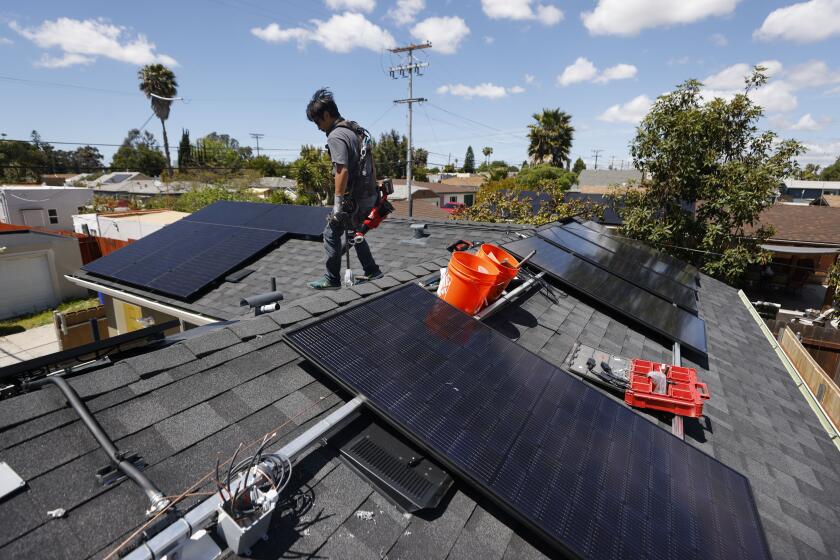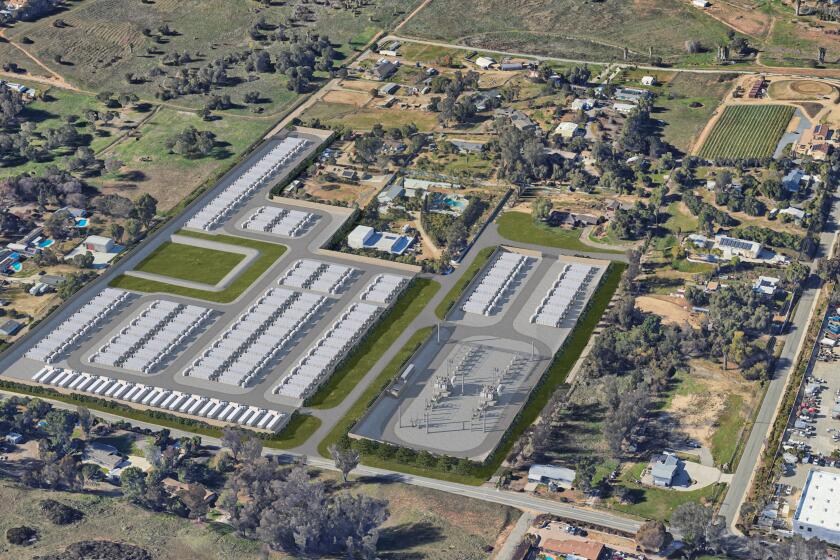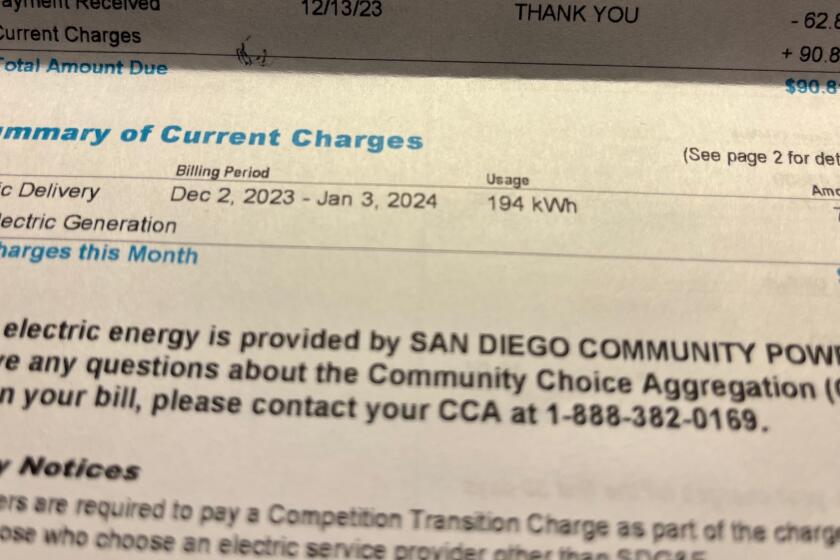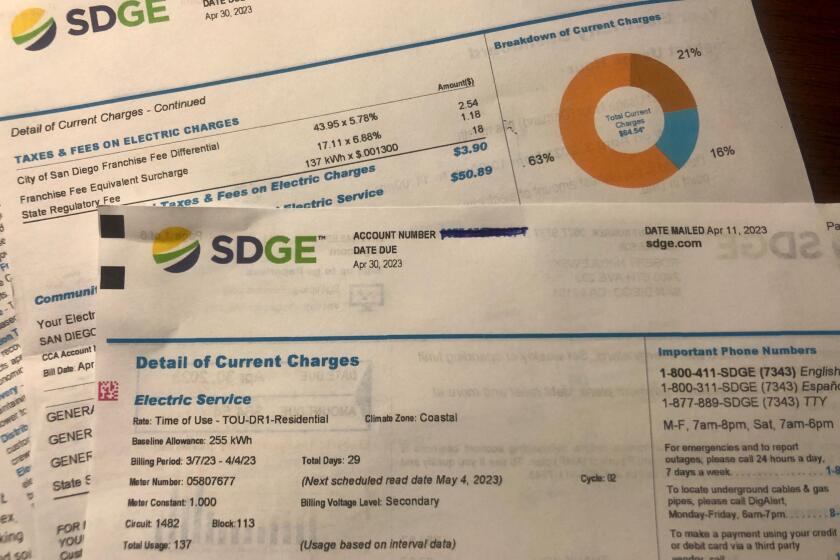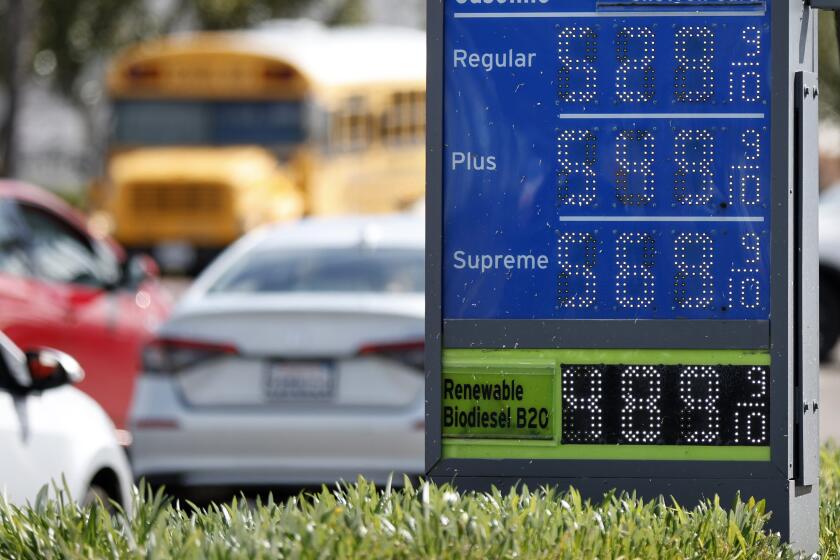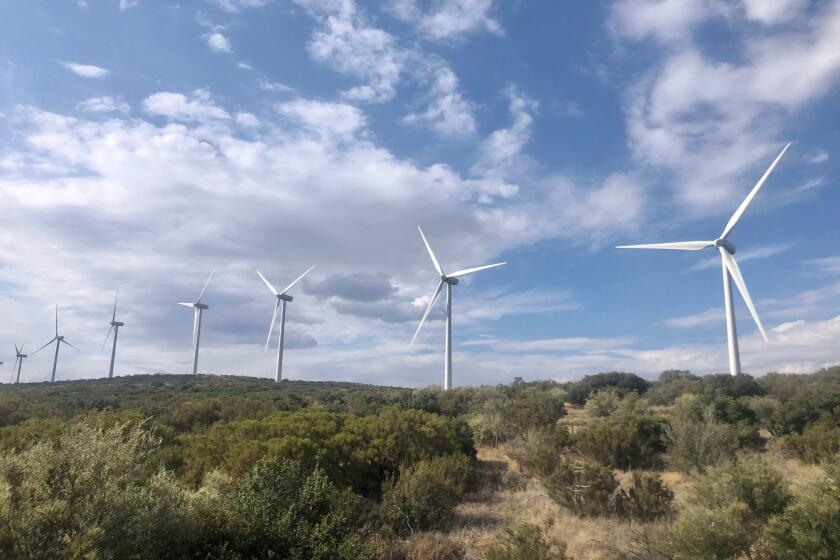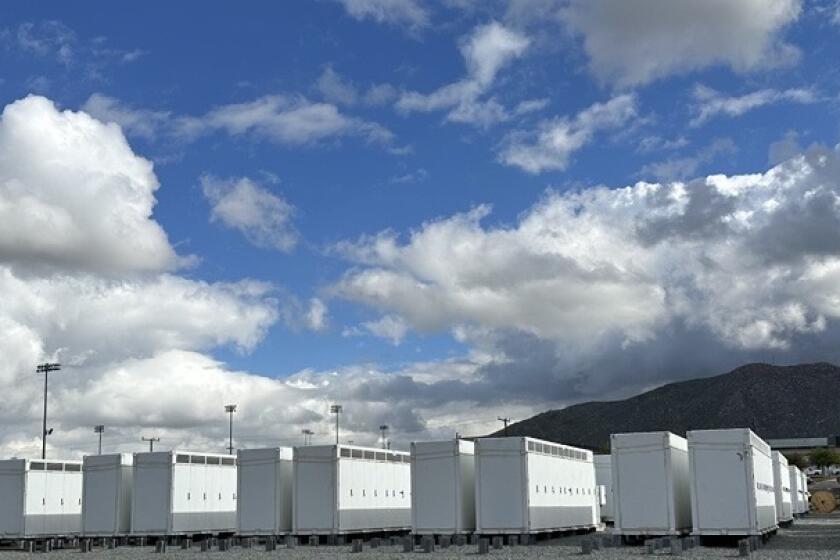State Lands Commission hears concerns over San Onofre nuclear plant
The San Onofre Nuclear Generating Station has not produced power since January 2012 and is in the process of being decommissioned.
But dismantling the site, operated by Southern California Edison, requires a series of approvals from a host of federal and state agencies, including obtaining a new lease from the California State Lands Commission.
With the existing lease expiring in 2023, the staff of the State Lands Commission has prepared a draft for a new lease and is working on an Environmental Impact Report. As required by the California Environmental Quality Act, the commission is getting oral and written input from the public.
The first of two days of public input began at City Hall in Oceanside Tuesday evening. About 150 turned out.
For Gary Headrick, co-founder of the advocacy group San Clemente Green, a major concern centers not on what will be left behind at SONGS but what may be taken away.
He wants to make sure that spent fuel pools are left on the site. “That’s the only way to deal with a canister that’s cracked or damaged in any way,” he said.
There are 3.55 million pounds of spent nuclear fuel at SONGS but the State Lands Commission hearing does not directly deal with the waste issue. That’s the responsibility of a federal agency — the Nuclear Regulatory Commission.
The State Lands Commission’s purview does include areas just offshore from the plant, including intake and discharge conduits that extend from the plant into the ocean.
Commission staff said it would also hear comments about the spent fuel pools at SONGS.
Used-up fuel is thermally hot and to cool it, nuclear operators place the fuel in a metal rack and submerge it in a deep pool in what is called “wet storage.”
Once sufficiently cooled, the fuel can be transferred into “dry storage.” Edison already has 50 canisters of waste on site in a dry storage installation. A second installation, recently constructed and approved by the California Coastal Commission, is in the process of transferring 73 canisters from wet storage.
Edison officials say the complete transfer will be finished by next year. Twenty-nine canisters have been moved thus far.
Headrick and other critics of the dry cask storage facility worry the walls of the casks are not thick enough and could crack due to earthquakes, a Fukushima-like tsunami, a terrorist attack or other disasters. Edison officials have long insisted the site is safe.
Headrick wants the wet storage pool to remain intact as a backup location to keep spent fuel, in case a problem is discovered in a dry storage cask.
Edison “would be leaving us with no other option” if the pool is dismantled, Headrick said. “It would run us off a cliff.”
Edison spokeswoman Maureen Brown said “storing spent fuel in dry casks is a proven, safe technology that has been used for more than three decades.”
Brown said the Nuclear Regulatory Commission in 2016 considered fuel pools at sites being decommissioned “as unnecessary” and cited how the Union of Concerned Scientists has echoed a similar opinion.
“More than 2,000 dry storage canisters have been loaded with used nuclear fuel, and there have been no incidents that prompted return of a welded canister to a spent fuel pool for repair,” Brown said in an email.
Others speaking at the Oceanside meeting Tuesday evening expressed worries ranging from radiation monitoring in case of a leak to the expenses racked up during the life of the plant.
“The electric companies keep making mistakes and I want it to stop,” said Michael Summers, a retiree from Fallbrook. “It costs the ratepayers.”
Edison ran into a problem in March during the transfer of spent fuel from wet storage to the new dry storage facility. Work was delayed 10 days after workers discovered a piece of shim — essentially, a pin 4 inches by a half-inch — came loose while a canister was being loaded.
Edison received assurance from Holtec International, the makers of the shim, and an independent engineering firm that the canister’s integrity was sound and the transfer process has continued.
SONGS is located on an 85-acre chunk of Marine Corps Base Camp Pendleton, owned by the Department of the Navy. The plant sits between the Pacific and one of the busiest freeways in the country — Interstate 5. About 8.4 million people live in a 50-mile radius of the plant in an area with a history of seismic activity.
The dry cask storage facilities are about 100 feet from the ocean, protected by a seawall 28 feet high.
The State Lands Commission will hold a second public hearing Wednesday at 1 p.m. at the Holiday Inn Express in San Clemente.
The three voting members of the commission are not taking part in the public hearings. Commission staff will prepare the Environmental Impact Report and a vote by commissioners is anticipated Dec. 11.
A joint venture called SONGS Decommissioning Solutions has been contracted to tackle the time-consuming and highly technical work involved in dismantling the plant. Edison oversees the joint venture, consisting of Los Angeles infrastructure company AECOM and Salt Lake City-based EnergySolutions.
It’s been estimated it will take about 10 years for the decommissioning process to be completed.
Edison officials have set a target date of end of 2032 to remove nearly every remnant of the plant. The property would then return to the U.S. Navy, which owns the land.
California State Lands Commission
Environmental Impact Report
San Onofre Nuclear Generating Station
Wednesday, 1 p.m.
Holiday Inn Express San Clemente
North Pier Ballroom
35 Via Poco Plaza, San Clemente 92672
Written comments to the commission will be accepted through Aug. 28 at CEQA.comments@slc.ca.gov
Business
rob.nikolewski@sduniontribune.com
(619) 293-1251 Twitter: @robnikolewski
Get U-T Business in your inbox on Mondays
Get ready for your week with the week’s top business stories from San Diego and California, in your inbox Monday mornings.
You may occasionally receive promotional content from the San Diego Union-Tribune.


